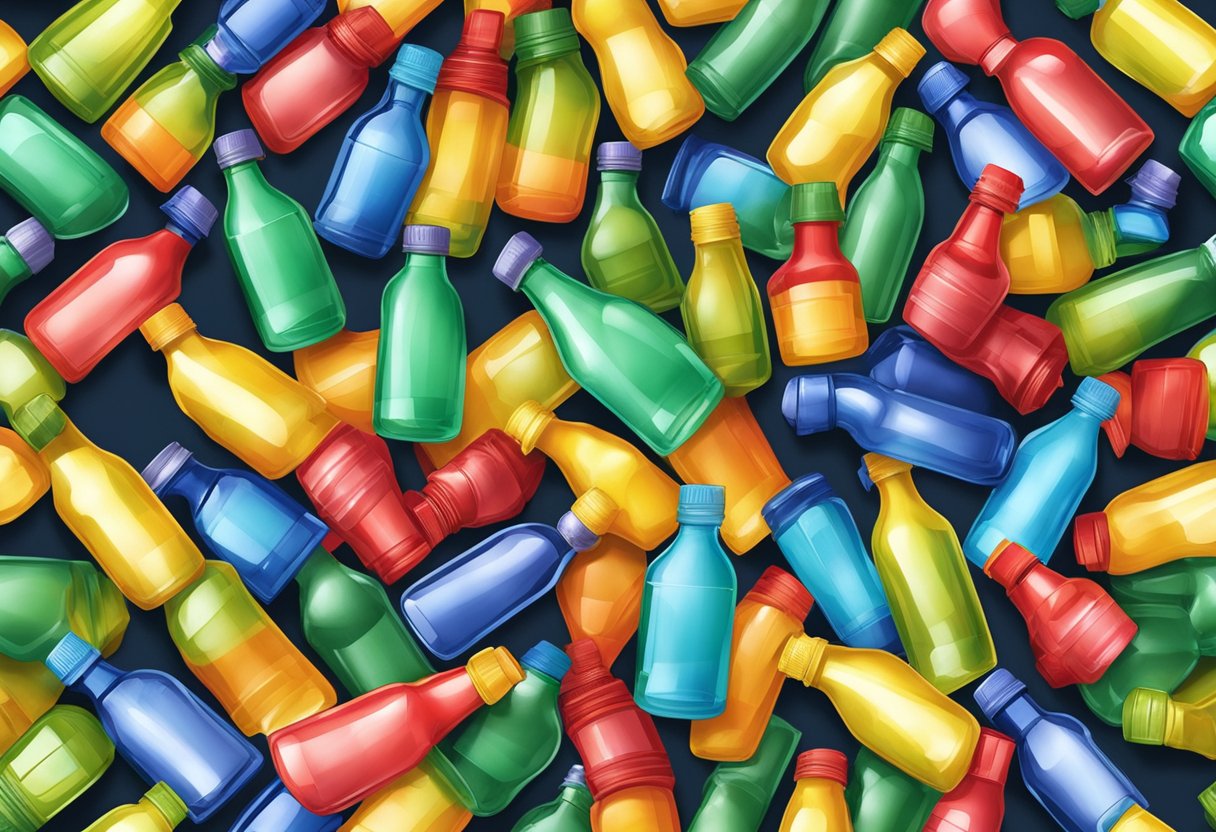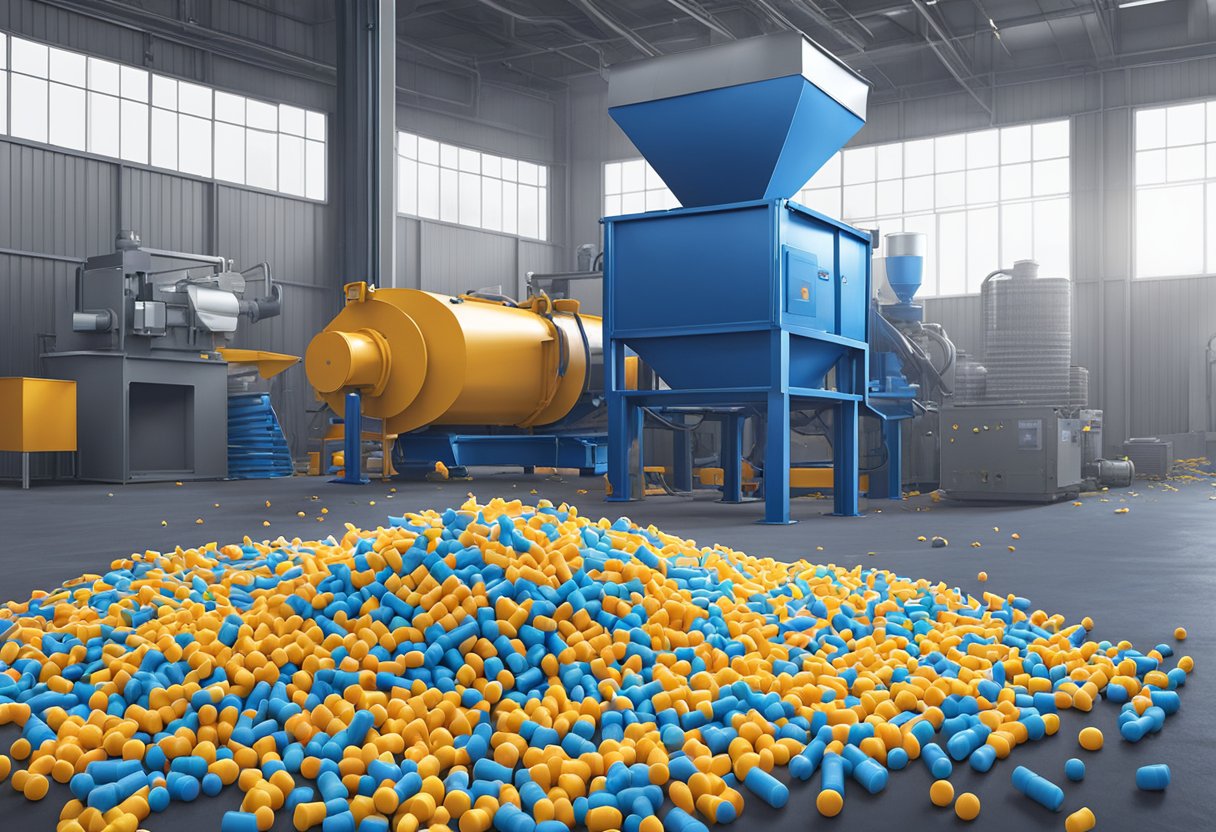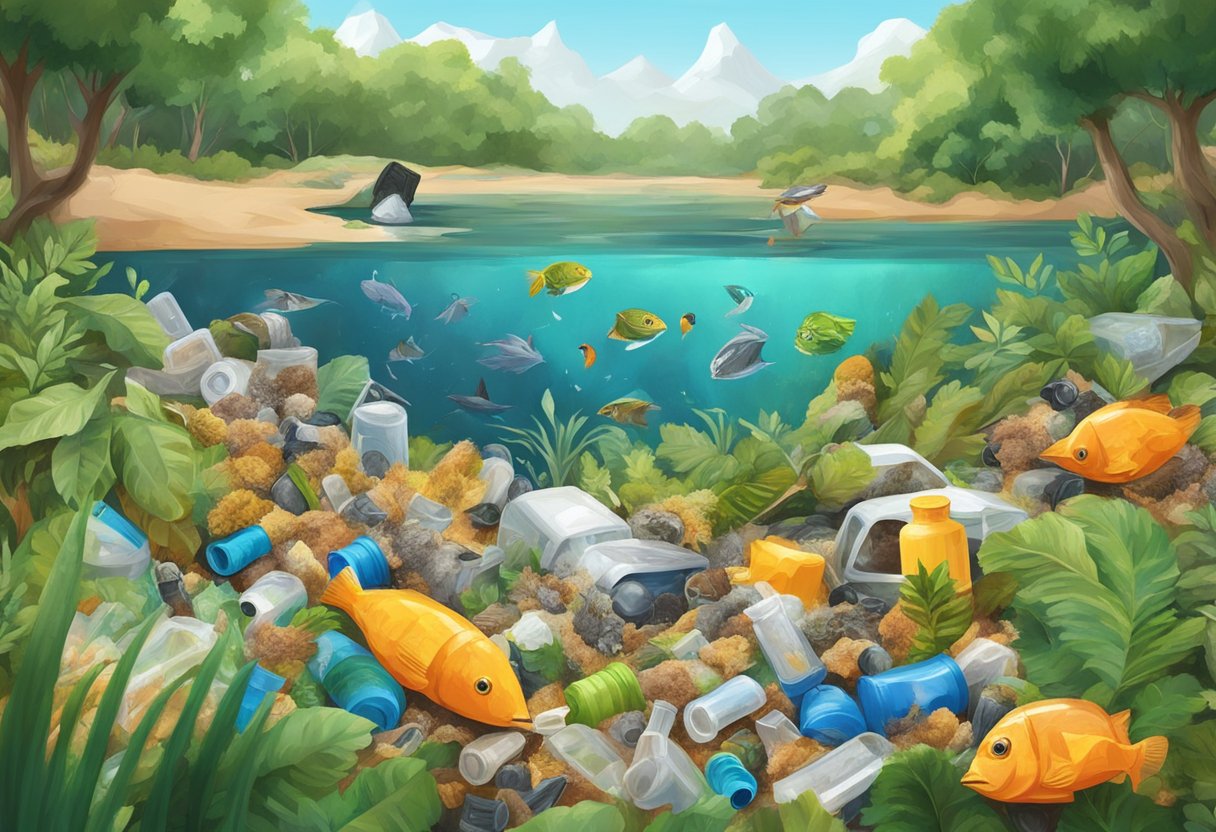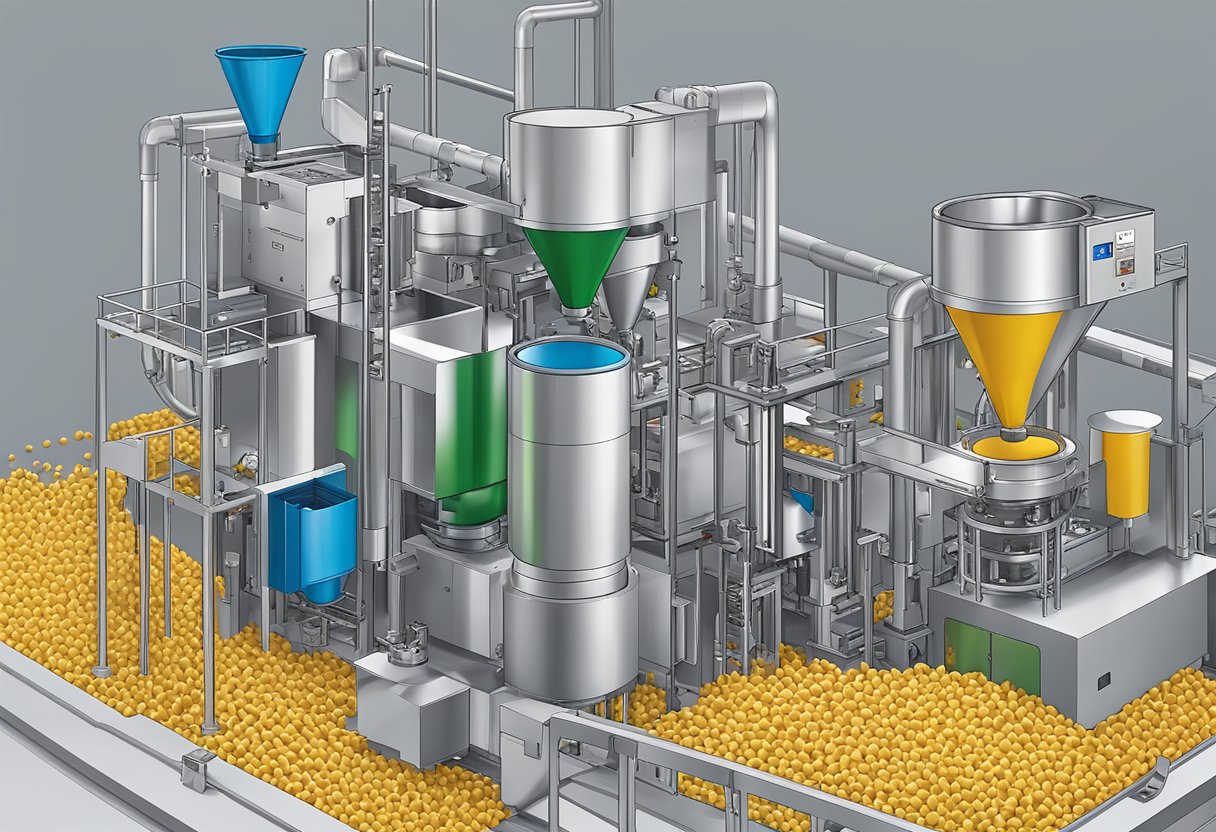PBSA Plastic: A Sustainable and Biodegradable Alternative to Traditional Plastics
19/01/2024
PBSA plastic, also known as polybutylene succinate adipate, is a biodegradable plastic that is gaining popularity as an eco-friendly alternative to traditional plastics. It is a type of polyester made from succinic acid, adipic acid, and 1,4-butanediol, which are all derived from renewable resources such as corn and sugarcane. PBSA plastic is biodegradable, compostable, and recyclable, making it a sustainable and environmentally friendly option.

PBSA plastic has a similar appearance and feel to traditional plastics, but it has a much lower carbon footprint. It is produced using less energy and emits fewer greenhouse gases during production. Additionally, it can be broken down by microorganisms in the environment, which means it will not accumulate in landfills or oceans like traditional plastics. As consumers become more aware of the impact of plastic waste on the environment, PBSA plastic is becoming an increasingly popular choice for manufacturers looking to reduce their environmental impact.
PBSA Plastic Overview

Chemical Composition
Poly(butylene succinate-co-adipate) (PBSA) is a biodegradable polyester that is synthesized by the polycondensation of butanediol, succinic acid, and adipic acid. PBSA is a copolymer that contains both aliphatic and aromatic components, which makes it a versatile material with a range of properties that can be tailored to specific applications.
Properties
PBSA has several desirable properties that make it an attractive alternative to traditional plastics. It is biodegradable, compostable, and renewable, which makes it an environmentally friendly option. PBSA is also transparent, flexible, and has good mechanical properties, which makes it suitable for a variety of applications such as packaging, textiles, and biomedical devices.
In terms of its mechanical properties, PBSA resin has a tensile strength of approximately 30-40 MPa, a Young’s modulus of 1.5-2.5 GPa, and a elongation at break of 100-300%. Its thermal properties are also noteworthy, with a melting point of 110-130°C and a glass transition temperature of -20 to -30°C. PBSA is also resistant to moisture and has good barrier properties, which makes it suitable for use in packaging applications.
Overall, PBSA is a promising biodegradable plastic that has the potential to replace traditional plastics in various applications. Its unique combination of properties makes it a versatile material that can be tailored to specific needs, and its biodegradability and compostability make it an environmentally friendly option.
Environmental Impact

Biodegradability
PBSA plastic is often touted as a more environmentally friendly alternative to traditional plastics due to its biodegradability. When exposed to certain conditions, such as heat, moisture, and microorganisms, PBSA can break down into water, carbon dioxide, and biomass. This means that PBSA has the potential to reduce the amount of plastic waste that ends up in landfills or the ocean.
However, it is important to note that not all PBSA products are created equal. The biodegradability of PBSA can vary depending on factors such as thickness, additives, and disposal conditions. Additionally, even if PBSA does biodegrade, it can still release harmful microplastics into the environment.
Comparison with Traditional Plastics
Compared to traditional plastics, PBSA has a lower carbon footprint and is made from renewable resources. This means that it has the potential to be a more sustainable option. However, it is important to note that PBSA is not a perfect solution and still has some environmental drawbacks.
For example, the production of PBSA requires a significant amount of energy and resources, which can have negative environmental impacts. Additionally, PBSA is not yet widely accepted in recycling programs, meaning that it can still contribute to plastic pollution if not disposed of properly.
Overall, while PBSA has the potential to be a more environmentally friendly alternative to traditional plastics, it is important to consider its limitations and continue to explore other solutions to plastic pollution.
Production Process

Raw Materials
PBSA plastic is a type of biodegradable plastic that is made from renewable resources. The raw materials used in the production of PBSA plastic include corn starch, natural oils, and other plant-based materials. These materials are sourced from sustainable and renewable sources, making PBSA plastic an environmentally friendly alternative to traditional plastics.
Manufacturing Techniques
The production process of PBSA plastic involves several steps. First, the raw materials are mixed together in a large container to create a homogenous mixture. Next, the mixture is heated and extruded into pellets. These pellets are then cooled and stored until they are ready to be molded into various shapes and forms.
One of the key advantages of PBSA plastic is that it can be processed using traditional plastic manufacturing techniques. This means that manufacturers can use existing equipment and machinery to produce PBSA plastic products, without having to make significant investments in new technology.
Overall, the production process of PBSA plastic is relatively simple and straightforward. By using renewable raw materials and traditional manufacturing techniques, PBSA plastic offers a sustainable and eco-friendly alternative to traditional plastics.
Applications
Packaging
PBSA plastic has a wide range of applications in the packaging industry. It is used for the production of various types of packaging materials, including films, bags, and containers. PBSA plastic is preferred over traditional plastics because of its biodegradability and compostability. It can be used for the packaging of food, beverages, and other consumer goods. PBSA plastic is also used for the production of biodegradable shopping bags, which are an eco-friendly alternative to traditional plastic bags.
Agricultural Use
PBSA plastic is also used in the agricultural industry. It is used for the production of mulch films, which are used to cover the soil around plants. Mulch films help to retain soil moisture, control weed growth, and regulate soil temperature. PBSA plastic mulch films are biodegradable and compostable, making them an eco-friendly alternative to traditional plastic mulch films.
Biomedical
PBSA plastic is used in the biomedical industry for the production of various medical devices. It is used for the production of surgical sutures, drug delivery systems, and other medical devices. PBSA plastic is preferred over traditional plastics because of its biodegradability and biocompatibility. It is also used for the production of biodegradable implants, which are an eco-friendly alternative to traditional plastic implants.
In conclusion, PBSA plastic has a wide range of applications in various industries. Its biodegradability and compostability make it an eco-friendly alternative to traditional plastics.
Market Trends
Demand Growth
In recent years, the demand for PBSA (Polybutylene succinate adipate) plastic has been steadily increasing due to its eco-friendly nature and biodegradability. The global PBSA market size was valued at USD 88.3 million in 2020 and is expected to reach USD 158.9 million by 2027, with a CAGR of 8.3% during the forecast period.
The demand for PBSA plastic is mainly driven by the increasing awareness among consumers and manufacturers about the environmental impact of traditional plastics. The rising demand for sustainable packaging solutions in various industries, such as food and beverage, cosmetics, and pharmaceuticals, is also contributing to the growth of the PBSA market.
Regulatory Influence
Regulatory bodies around the world are implementing stringent regulations to reduce the use of traditional plastics and promote the use of biodegradable alternatives like PBSA. For instance, the European Union’s Single-Use Plastics Directive aims to ban the use of certain single-use plastics by 2021 and promote the use of sustainable alternatives like PBSA.
Similarly, many countries have imposed taxes on single-use plastics, which is expected to further increase the demand for PBSA plastic. The growing number of government initiatives and regulations promoting the use of biodegradable plastics is expected to drive the growth of the PBSA market in the coming years.
Overall, the PBSA market is expected to witness significant growth in the coming years, driven by the increasing demand for eco-friendly and sustainable packaging solutions and the growing regulatory influence promoting the use of biodegradable plastics.
Recycling and Waste Management
Recycling Processes
PBSA plastic is a recyclable material, and recycling it helps reduce the amount of waste that ends up in landfills. The recycling process involves collecting the PBSA plastic waste, cleaning, and sorting it based on color and grade. The sorted plastic is then shredded into small pieces and melted down to form pellets, which can be used to create new products.
Recycling PBSA plastic is an eco-friendly solution that can help reduce the carbon footprint of manufacturing and production processes. It also conserves natural resources and reduces the amount of energy required to produce new plastic products.
Composting and Disposal
While PBSA plastic is compostable and biodegradable, it requires specific conditions to break down. It is essential to dispose of PBSA plastic in an industrial composting facility that maintains specific temperature, moisture, and oxygen levels. The composting process can take up to six months, depending on the conditions.
When PBSA plastic is not disposed of correctly, it can cause harm to the environment. For instance, if PBSA plastic is discarded in the ocean or other natural habitats, it can harm marine life and pollute the environment. Therefore, it is crucial to dispose of PBSA plastic responsibly by recycling or composting it in an appropriate facility.
In conclusion, PBSA plastic is a versatile material that can be recycled and composted to reduce waste and conserve natural resources. By taking the right steps to recycle or compost PBSA plastic, individuals and businesses can contribute to a more sustainable future.
Challenges and Limitations
Cost Factors
One of the major challenges of using PBSA plastic is its cost. As compared to other types of plastics, PBSA is relatively expensive. This is due to the complexity of the manufacturing process and the limited availability of raw materials. Additionally, the demand for PBSA is still relatively low, which means that economies of scale have not yet been achieved. As a result, the cost of producing PBSA remains high, which limits its widespread use.
Performance Issues
While PBSA plastic has many advantages, it also has some limitations when it comes to performance. One of the main issues is its low heat resistance. PBSA plastics has a lower melting point than other types of plastics, which means that it cannot be used in high-temperature applications. Additionally, PBSA plastics is not as strong as some other plastics, which limits its use in applications that require high strength or durability.
Despite these challenges, PBSA plastics remains a promising material for many applications. As research continues, it is likely that new manufacturing techniques and cost-saving measures will be developed, which will help to overcome some of the limitations of this material.
Future Perspectives
Technological Advancements
As technology continues to advance, it is likely that new and improved methods for producing PBSA plastics will be developed. This could lead to increased efficiency in production, as well as a reduction in costs. Additionally, new applications for PBSA plastics may be discovered, as researchers continue to explore the material’s unique properties.
One potential area for development is in the field of biodegradable packaging. As consumers become increasingly concerned about the environmental impact of traditional packaging materials, there is a growing demand for sustainable alternatives. PBSA plastics, with its biodegradable properties, could be an ideal solution.
Sustainable Development Goals
The use of PBSA plastics aligns with several of the United Nations’ Sustainable Development Goals (SDGs). For example, the material’s biodegradability supports SDG 14, which aims to conserve and sustainably use the oceans, seas, and marine resources. Additionally, PBSA plastics can help to reduce waste and support SDG 12, which focuses on responsible consumption and production.
As awareness of the importance of sustainability continues to grow, it is likely that there will be increasing demand for products made from PBSA plastics. This could lead to greater investment in research and development, as well as increased adoption of the material in various industries.
Overall, the future looks bright for PBSA plastics. As technology continues to advance and sustainability becomes an increasingly important consideration, PBSA plastics is well-positioned to play an important role in the development of more sustainable products and packaging materials.




